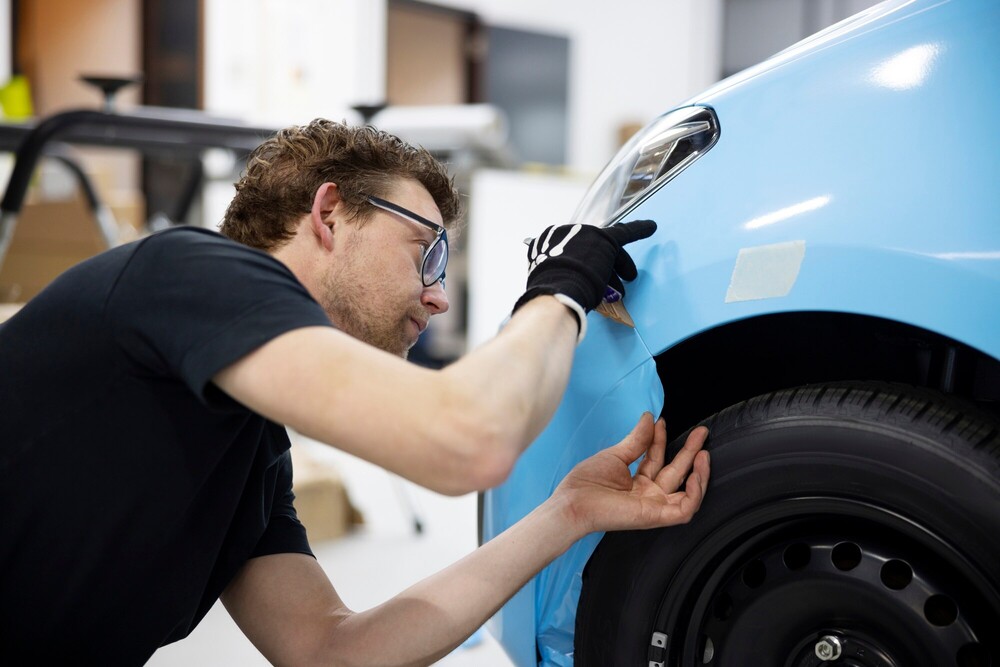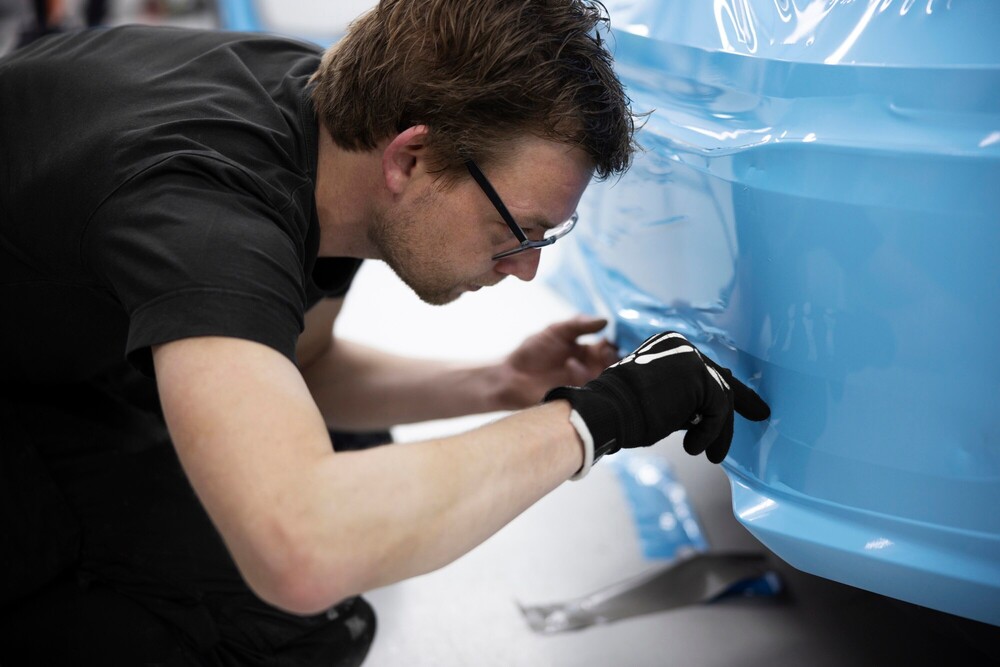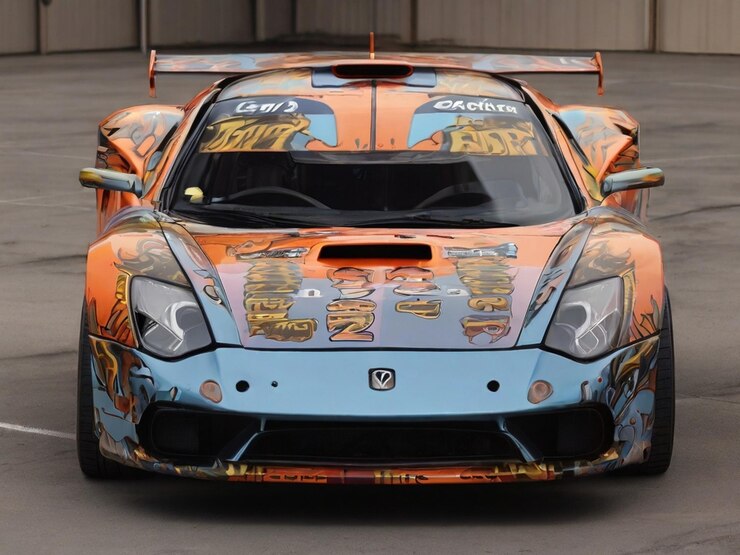Car vinyl wraps are an excellent way to customize and protect your vehicle. As the U.S. automotive wrap films market is projected to reach USD 4.32 billion by 2028, more car owners opt for vinyl wraps to personalize their cars. However, managing overheating in a car vinyl wrap is essential to ensure its longevity and effectiveness.
Here are seven effective ways to manage overheating in a car vinyl wrap:
Table of Contents
Key Takeaways
1. Choose the Right Material
2. Ensure Proper Installation Techniques
3. Vehicle Maintenance and Care
4. Consider Parking and Storage
5. Monitor and Manage Exposure to Elements
6. Timely Repairs and Adjustments
7. Utilize Technology Advancements
Frequently Asked Questions (FAQs)
Transform Your Ride with Illmatic Wraps!
| Key Takeaways Selecting heat-resistant materials for a car vinyl wrap is crucial for longevity and appearance in high-temperature environments.Professional installation ensures optimal adhesion and heat dissipation, preventing overheating-related damage.Regular cleaning and maintenance of a car vinyl wrap, including the use of protective coatings, are key to preventing heat-related wear and tear.Strategic parking in shaded areas and using car covers can significantly reduce heat exposure and prolong the life of a car vinyl wrap.Actively monitoring and minimizing the car vinyl wrap’s exposure to direct sunlight and extreme temperatures can prevent overheating and damage.Addressing heat damage early and making necessary adjustments to the car vinyl wrap can prevent further deterioration and extend its lifespan.Staying updated with the latest advancements in car vinyl wrap technology, such as heat-resistant materials and UV protective coatings, enhances wrap durability against overheating. |
1. Choose the Right Material
The material you choose lays the foundation for how well your wrap will withstand the rigors of heat and sun exposure. While most vinyl wraps can withstand UV rays, rain, and minor abrasion, not all materials are created equal. As such, choose a car vinyl wrap specifically engineered to resist the damaging effects of high temperatures. This is especially crucial in cities like New York, NY, where summer temperatures can soar, potentially harming the appearance and integrity of your car vinyl wrap.
Different Vinyl Wrap Materials
- Polyvinyl Chloride (PVC): Most car vinyl wraps are made from PVC, which offers flexibility and durability. However, its heat resistance can vary based on the manufacturing process and additives.
- Cast Vinyl: Known for its durability and ability to conform to complex curves, cast vinyl is a popular choice for a car vinyl wrap. It often has better heat resistance than other types.
- Calendered Vinyl: Generally more affordable but less durable than cast vinyl, calendered vinyl might be more prone to heat damage and is typically recommended for flat surfaces.
Heat Resistance and Durability
- Heat-Resistant Additives: Some vinyl wraps include additives that improve heat resistance. These materials are essential for maintaining the wrap’s color and texture in hot climates.
- Thickness and Conformability: Thicker vinyl wraps might offer better protection against heat, but they can be more challenging to apply. The right balance between thickness and flexibility is crucial for heat management.
Selecting the Right Wrap
- Brand Reputation: High-quality brands often mean better heat resistance.
- Color and Finish: Darker colors and certain finishes (like matte or chrome) may absorb more heat, affecting their longevity. Consider lighter colors or specific finishes designed for better heat management.

2. Ensure Proper Installation Techniques
The longevity and appearance of a car vinyl wrap are significantly influenced by the quality of its installation. A poorly installed wrap can exacerbate the effects of overheating, leading to issues such as bubbling, peeling, and color degradation. This is why professionals like Illmatic Wraps emphasize the importance of expert installation. Proper installation techniques ensure that the wrap adheres correctly to the vehicle, providing a seamless finish that is more resistant to heat and environmental factors.
Key Steps in Professional Installation
- Surface Preparation: The vehicle’s surface must be meticulously cleaned and free of contaminants. Any dirt, oil, or residue can prevent the vinyl from adhering properly, creating pockets where heat can accumulate.
- Temperature Control: Installation should be done in a controlled environment. Extreme temperatures can affect the adhesive’s behavior, leading to poor adhesion and increased susceptibility to heat damage.
- Application Technique: Professionals use specific tools and techniques to apply the vinyl, ensuring it conforms perfectly to the vehicle’s contours. This includes using squeegees, heat guns, and precise cutting tools.
Avoiding Common Mistakes
- Overstretching the Vinyl: Stretching the vinyl too much during installation can thin the material, reducing its ability to resist heat. This is a common mistake among non-professionals.
- Inadequate Sealing: Edges and seams must be properly sealed. Poor sealing can allow heat and moisture to penetrate under the wrap, causing lifting and peeling.
- Ignoring Manufacturer Guidelines: Each type of vinyl wrap has specific installation guidelines. Ignoring these can lead to mistakes that predispose the wrap to heat damage.
Why Professional Installers Matter
- Expertise and Experience: Professionals have the expertise and experience to navigate the complexities of vinyl wrap installation. They understand working with different materials and vehicle shapes to ensure optimal results.\
- Warranty and Reliability: Many professional installers offer warranties on their work. This provides peace of mind and ensures that any installation-related issues can be promptly addressed.
Aftercare Advice
- Post-Installation Care: After installation, allowing the vinyl to cure is important. Experts advise on the specific care instructions, including how long to avoid washing the vehicle and exposing it to extreme temperatures.
- Regular Inspections: Regularly inspect the wrap for signs of lifting or bubbling, especially after exposure to high temperatures. Early detection of these issues can prevent more serious damage.
3. Vehicle Maintenance and Care
Regular maintenance is essential for preserving the integrity and appearance of your car vinyl wrap, particularly in mitigating the risks associated with overheating. The care regime for a wrapped vehicle, especially in an urban setting like New York, NY, requires specific attention to prevent heat-related damages. Renowned wrap specialists emphasize the importance of a diligent maintenance routine to extend the life and vibrancy of your car vinyl wrap.
Effective Cleaning Practices
- Regular Washing: Wash your car regularly to remove dirt and grime that can trap heat. Use gentle, wrap-safe cleaning products and avoid harsh chemicals that can degrade the vinyl.
- Soft Cleaning Tools: Use soft cloths or sponges to prevent scratches. Abrasive tools can create micro-scratches where heat and dirt can accumulate.
- Avoiding High-Pressure Washes: High-pressure water can lift the edges of the wrap, allowing heat and moisture to penetrate and damage the adhesive.
Protective Measures
- Waxing and Sealants: While not all wraps are suitable for waxing, certain types can benefit from a specialized wrap-safe wax or sealant. These products provide a protective layer against UV rays and heat.
- Parking Strategies: Whenever possible, park in shaded areas or indoors to minimize exposure to direct sunlight. Prolonged sun exposure can accelerate the effects of overheating on the wrap.
Dealing with Stains and Spills
- Immediate Attention: Quickly address any spills or stains. Certain substances like bird droppings, tree sap, or fuel spills can cause more damage if left untreated, especially under high heat conditions.
- Gentle Cleaning Agents: To treat stains without damaging the material, use gentle, non-abrasive cleaners specifically designed for vinyl wraps.
Periodic Inspections
- Surface Checks: Regularly inspect the wrap for signs of wear, such as lifting, bubbling, or discoloration. These can be early indicators of heat damage.
- Professional Assessments: Schedule periodic inspections with experts. They can identify issues that might not be immediately apparent and suggest corrective actions.
4. Consider Parking and Storage
How you park and store your vehicle can significantly influence the longevity and appearance of your car vinyl wrap, particularly in a bustling urban environment like New York, NY. Heat management for a car vinyl wrap doesn’t just end with the choice of material or installation; it extends into everyday habits. A renowned car wrap specialist in NYC, highlights the importance of thoughtful parking and storage to mitigate the risk of overheating and prolong the wrap’s life.
Strategic Parking Habits
- Seeking Shade: Whenever possible, park your vehicle in shaded areas. This reduces direct exposure to sunlight, minimizing the risk of the vinyl wrap overheating and deteriorating.
- Utilizing Covered Parking: Garages or covered parking spots provide ideal protection from the sun and heat, especially during the hottest parts of the day.
- Avoiding Heat Traps: Avoid parking near reflective surfaces, like large glass buildings, which can amplify heat and sunlight, exacerbating the potential for overheating.
Protective Vehicle Storage
- Indoor Storage: When not in use, storing your vehicle in a garage or covered space can significantly reduce exposure to heat and UV rays.
- Using Car Covers: If indoor storage isn’t an option, a high-quality car cover can help. Opt for covers specifically designed to reflect sunlight and provide thermal insulation.
Temperature Considerations
- Monitoring Ambient Temperatures: Be aware of the local weather and temperature fluctuations. Take extra precautions to protect your wrap during heat waves or unusually hot days.
- Ventilation: Ensure adequate ventilation in your storage area. Poor ventilation can lead to heat buildup, affecting the car vinyl wrap.
Timing Your Exposures
- Limit Daytime Parking: Limit prolonged parking during peak sunlight hours. Early morning or evening times are preferable when the sun is less intense.
- Seasonal Adjustments: Adapt your parking and storage strategies according to the seasons. What works in winter may not be suitable in the summer.
5. Monitor and Manage Exposure to Elements
Exposure to the elements, particularly the sun, plays a significant role in the health and longevity of a car vinyl wrap. Managing this exposure is crucial in urban environments like New York, NY, where vehicles are regularly exposed to intense sun and varying temperatures. A car vinyl wrap expert advises clients on strategies to minimize damage caused by environmental factors, ensuring that their wraps stay vibrant and intact for longer.
Understanding the Impact of Sun and Heat
- UV Exposure: Prolonged exposure to UV rays can cause the vinyl wrap to fade and deteriorate. UV protection is a key factor in maintaining the wrap’s appearance.
- Heat Accumulation: Vehicles, especially those with darker wraps, can absorb significant heat when exposed to direct sunlight. This heat can cause the vinyl to soften and potentially warp or bubble.
Tools for Monitoring Wrap Temperature
- Infrared Thermometers: These tools allow you to measure the surface temperature of your wrap, helping you understand how much heat your vehicle is exposed to in different parking situations.
- Heat Sensors: Advanced heat sensors can provide real-time data on the temperature of your car vinyl wrap, enabling you to take timely protective measures.
Strategies for Minimizing Exposure
- Parking Decisions: As mentioned earlier, choosing shaded parking spots or covered parking can significantly reduce the direct sunlight your vehicle receives.
- Timing Your Drives: Plan your driving times to avoid peak sun hours. Early morning or late afternoon drives are preferable during hot days.
- Window Shades: Using reflective window shades while parked can help reduce the vehicle’s interior temperature, indirectly protecting the wrap.
Seasonal Considerations
- Summer Care: Extra precautions are necessary in summer due to higher temperatures and more intense sunlight.
- Winter Protection: While overheating is less of a concern in winter, protecting the wrap from the elements, like road salt and icy conditions, is important.
6. Timely Repairs and Adjustments
Timely intervention is critical in managing and preventing further damage to a car vinyl wrap, especially when dealing with the effects of overheating. In bustling urban environments like New York, NY, where vehicles are exposed to various elements, recognizing and addressing early signs of heat damage can significantly extend the life of your car vinyl wrap. A car vinyl wrap expert stresses the importance of quick and effective responses to any signs of wrap deterioration.
Identifying Signs of Heat Damage
- Discoloration: One of the first signs of heat damage is a change in color or fading. Prolonged exposure to the sun can cause the colors in the vinyl wrap to fade unevenly.
- Bubbling and Peeling: Heat can cause the vinyl to soften and lose its adhesion, resulting in bubbling or peeling edges.
- Texture Changes: Overheating can also alter the wrap’s texture, making it brittle or overly soft.
Why Prompt Repairs Matter
- Preventing Further Damage: Addressing minor issues quickly can prevent them from escalating into major problems that require complete wrap replacement.
- Maintaining Appearance: Timely repairs ensure the wrap looks professional and aesthetically pleasing.
DIY Repairs vs. Professional Help
- Small Fixes: DIY solutions can solve minor issues like small bubbles or slight peeling. Use a heat gun carefully to heat and gently reapply the affected area.
- Seeking Expertise: For more significant damage, professional intervention is recommended.
Adjusting Wrap Care Routine
- Post-Repair Maintenance: Adjusting your wrap care routine may be necessary after repairs. This could include more frequent inspections or changes in cleaning and maintaining the wrap.
- Monitoring for Recurrence: Monitor closely the areas that were repaired to prevent recurrence. Regular monitoring helps in early detection and prevention of future issues.

7. Utilize Technology Advancements
The car vinyl wrap industry is continuously evolving, with technological advancements and environmental concerns playing a pivotal role in enhancing wraps’ durability and heat resistance. In a city like New York, NY, where environmental factors can significantly affect the longevity of a car vinyl wrap, staying abreast of these advancements is crucial.
Overview of New Technologies
- Heat-Resistant Materials: Research and development in vinyl wrap materials have created wraps with enhanced heat resistance. These materials can withstand higher temperatures without degrading.
- UV Protective Coatings: Advanced coatings that provide a barrier against UV rays are becoming increasingly popular. They help prevent the wrap from fading and deteriorating due to sun exposure.
- Improved Adhesives: The development of stronger, more heat-resistant adhesives ensures that the wrap remains securely attached to the vehicle even in high temperatures.
Innovations in Wrap Materials and Coatings
- Reflective Technologies: Some modern wraps include reflective technologies that repel sunlight and reduce heat absorption.
- Nano-Ceramic Layers: Incorporating nano-ceramic layers in wraps can enhance their heat resistance and durability.
- Eco-Friendly Options: The industry is also seeing a rise in eco-friendly materials that are heat resistant and have a lower environmental impact.
Stay Updated on the Latest Products and Techniques
- Professional Networks: Establishing connections with professional installers ensures you have access to the latest products and techniques in the market.
- Continuous Learning: Regularly attending industry expos, workshops, and seminars can inform you about the latest trends and developments in car vinyl wrap technology.
Frequently Asked Questions (FAQs)
Is it cheaper to paint or wrap a car?
Wrapping a car is generally cheaper than a high-quality paint job. The cost can vary, but wraps typically range from $2,500 to $5,000, while a professional paint job can cost $3,000 to $10,000. Wraps also offer the advantage of easier removal and changes.
How long does a wrap last on a car?
A high-quality vinyl wrap can last between 5 to 7 years with proper maintenance. Environmental factors and care practices can affect its longevity. Regular cleaning and avoiding prolonged sun exposure help maintain the wrap’s condition.
Is it a good idea to vinyl wrap a car?
Yes, vinyl wrapping a car is a good idea for those seeking customization and protection. It offers a wide range of colors and finishes, is generally less expensive than painting, and can protect the original paint. Additionally, wraps can be easily removed or changed.
Does vinyl wrap scratch easily?
Vinyl wraps can scratch, but high-quality wraps are designed to be more resistant to minor abrasions. Using proper cleaning methods and protective coatings can help minimize scratches. However, they are not as durable as traditional paint in resisting deep scratches.
Does wrapping a car devalue it?
Wrapping a car does not typically devalue it; in fact, it can protect the original paint, preserving the car’s resale value. When removed, the wrap can reveal the original paint in excellent condition. Properly installed and maintained wraps are generally viewed positively in the market.
Transform Your Ride with Car Vinyl Wraps at Illmatic Wraps!
Discover the ultimate solution with Illmatic Wraps in New York, NY! Our expert team is passionate about transforming your vehicle with top-quality car vinyl wraps that not only look stunning but also provide exceptional protection against overheating and environmental factors. Call us now!




